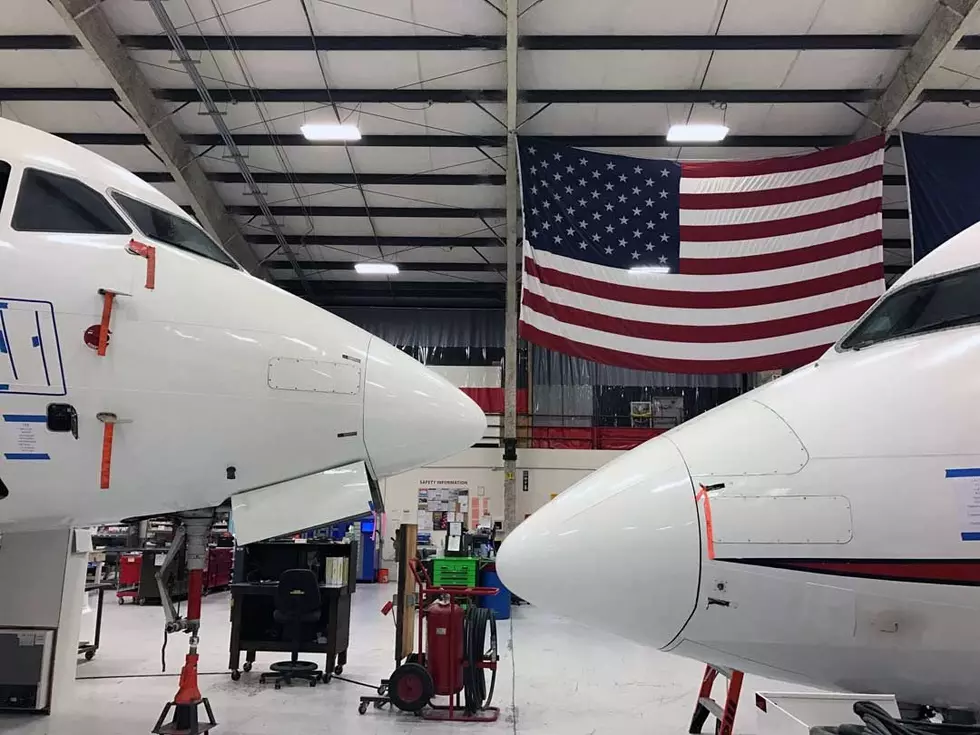
Passing of Neptune Aviation founder Timmons leaves aerial firefighting legacy
When Jennifer Draughon thinks of her former boss and the founder of Neptune Aviation, words like leadership and mentor come to mind. When she considers how Marta Timmons helped revolutionize the once-fragmented aerial firefighting industry, she uses the word visionary.
Timmons passed away in Missoula on Oct. 30, though her legacy lives on in Neptune's 235 employees and its fleet of BAe-146 airtankers. The company remains a staple of the firefighting industry and its aircraft remain a key asset in the U.S. Forest Service's arsenal of firefighting equipment.
“Marta was a wonderful visionary leader for us at Neptune,” said Draughon, the company's president. “She was my mentor and she taught me how to put your head down, be determined and visionary – how to stay the course. She really was a true leader.”
For the past 25 years, Neptune's red and white tankers – named by the number painted on their tail fin (the fabled Tanker 10, for example) – have adorned the tarmac at Missoula International Airport.
Back when the World War II era P2vs were in use, they frequented the skies over Missoula with their distinctive rumble. At times, they made appearances over Grizzly football games, or circled the valley in celebration of some event.
This year, Neptune's fleet of BAe-146s remain active, another nod to the role Timmons played in the industry.
“Neptune has flown 3,093 hours this year and has dropped 10 million gallons of retardant and counting,” said Draughon. “Four of our tankers are still in California, helping fight another wildfire season.”
Inspired by Amelia Earhart, Timmons became a proficient multi-engine pilot and opened the charter company Thunderbird Aviation in Missoula in 1989. The next year, she launched Northstar Air Express, a Fixed Base Operation also located at the airport. The company now operates as Northstar Jet.
In 1994, Timmons turned her attention to the aerial firefighting industry.
“Back then, aerial firefighting was a different industry than it is today,” said Draughon. “She wanted to make a difference in the industry, and she really did.”
With an eye on aerial firefighting, Timmons looked south to Alamogordo, New Mexico, home of the airtanker company Black Hills Aviation. The company operated a fleet of Lockheed P2v aircraft, a relic of WWII that had been retrofitted for aerial firefighting.
Timmons began negotiations with Black Hills Aviation and soon acquired the company. Draughon said Timmons relocated the fleet of tankers to Missoula and began one of the nation's top aerial firefighting companies.
“She just wanted to basically become a little more innovative within the aerial firefighting industry,” said Draughon. “Back then, it was more mom and pop. She wanted the industry to come together and become more effective and united, and better able to protect the county and improve the assets.”
Those who knew Timmons described her as more than a visionary businesswoman who helped revolutionize the aerial firefighting industry. She was a pilot and scientist, earning a masters degree in anthropology from the University of Montana.
Aiming for a PhD, Timmons was ready to defend her doctoral study on women and children in the American mining West. But the end of life loomed toward the fall of 2020. Because Timmons was so close to completing her study, her doctoral committee and leaders from UM’s Graduate School unanimously agreed to advance her to PhD candidacy.
“I keep thinking about how much influence Marta had on my thinking,” one of Timmon's university students said upon her passing. “She really turned my head academically. The world, and UM, is less bright without Marta.”
Timmons also kept Neptune Aviation on what Draughon described as a visionary path. In 2010, according to Neptune CEO Ron Hooper, the company began exploring international opportunities, and in 2013, it bid on a contract in Australia.
While it didn't win the Australian contract, it sent one of its BAe tankers to Chili in 2017 to help with that country's disastrous fire season. It marked the first time Neptune had flow its aircraft outside of North America.
“We're working on getting international contracts so we can diversify and work off season, as well as with the Forest Service and Cal Fire,” said Draughon. “Fire seasons aren't going away.”
In 2010, while looking to expand internationally, Timmons also recognized the need to modernize the company's aging aircraft. The old P2vs were developed in the 1940s and carried around 2,100 gallons of retardant.
In comparison, the BAe-146 has more than twice the service hours and can carry upwards of 3,000 gallons of retardant. Neptune's transition from P2v to the BAe made national news and in Missoula, where the P2vs had become a nostalgic and patriotic site, it was also somewhat sentimental.
But for Neptune and Timmons, the transition made good business sense.
“Those P2vs could have kept going. They were workhorses,” said Draughon. “But the Forest Service was looking for what they termed a next-generation aircraft. These BAe's are British Aerospace airliners retrofitted for firefighting. We were really the first in the industry to do it.”
Timmons helped lead the transition and in 2017, when the fleet of P2vs was officially retired during a ceremony in Missoula, thousands turned out to watch the old aircraft fly overhead, releasing clouds of water across the runway.
The old aircraft purchased by Timmons in New Mexico in 1994 soon went to various museums. As a legacy, however, one sits as a static display at the entrance of Missoula International Airport. It's no accident that it's Tanker 10.
“The number of lives these aircraft have affected in this community, at Neptune Aviation, in this nation is phenomenal,” Greg Jones, Neptune’s vice president of development, said during the ceremony. “We are also very fortunate that Neptune is a major, major influence in how we do aerial firefighting in this country.”
